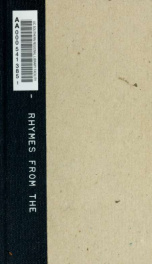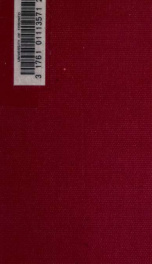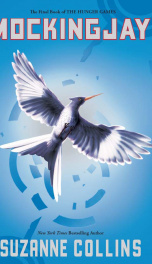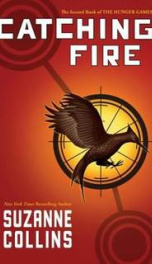Tolstoy Leo graf
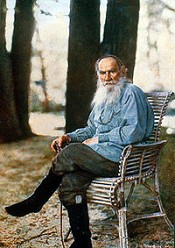
Leo Tolstoy, or Count Lev Nikolayevich Tolstoy (Russian: Лев Никола́евич Толсто́й (help·info), Russian pronunciation: [lʲɛv nʲɪkɐˈlaɪvʲɪtɕ tɐlˈstoj]; September 9 [O.S. August 28] 1828 – November 20 [O.S. November 7] 1910), was a Russian writer widely regarded as among the greatest of novelists. His masterpieces War and Peace and Anna Karenina represent in their scope, breadth and vivid depiction of 19th-century Russian life and attitudes, the peak of realist fiction. . But realism is not the peculiar artistic feature in which Tolstoy excels, as other writers deepened his descriptions and were equally good at vivid description;[1] rather, it is Tolstoy's gifted method of picturing life which most pleasingly and exactly corresponds to our sense of time.[1] Tolstoy's further talents as essayist, dramatist, and educational reformer made him the most influential member of the aristocratic Tolstoy family. His literal interpretation of the ethical teachings of Jesus, centering on the Sermon on the Mount, caused him in later life to become a fervent Christian anarchist and pacifist. His ideas on nonviolent resistance, expressed in such works as The Kingdom of God Is Within You, were to have a profound impact on such pivotal twentieth-century figures as Gandhi[2] and Martin Luther King, Jr. Tolstoy was born in Yasnaya Polyana, the family estate in the Tula region of Russia. The Tolstoys were a well-known family of old Russian nobility; he was connected to the grandest of Russian aristocracy. Pushkin was his fourth cousin. He was the fourth of five children of Countess Mariya Tolstaya (Volkonskaya). Tolstoy's parents died when he was young, so he and his siblings were brought up by relatives. In 1844, he began studying law and oriental languages at Kazan University. His teachers described him as "both unable and unwilling to learn." Tolstoy left university in the middle of his studies, returned to Yasnaya Polyana and then spent much of his time in Moscow and Saint Petersburg. In 1851, after running up heavy gambling debts, he went with his elder brother to the Caucasus and joined the army. Around this time, he started writing. His conversion from a dissolute and privileged society author to the non-violent and spiritual anarchist of his latter days was brought about by two trips around Europe in 1857 and 1860-61, a period when many liberal-leaning Russian aristocrats escaped the stifling political repression in Russia; others who followed the same path were Alexander Herzen, Mikhail Bakunin, and Peter Kropotkin. During his 1857 visit, Tolstoy witnessed a public execution in Paris, a traumatic experience that would mark the rest of his life. Writing in a letter to his friend V. P. Botkin: The truth is that the State is a conspiracy designed not only to exploit, but above all to corrupt its citizens ... Henceforth, I shall never serve any government anywhere. His European trip in 1860-61 shaped both his political and literary transformation when he met Victor Hugo, whose literary talents Tolstoy praised after reading Hugo's newly finished Les Miserables. A comparison of Hugo's novel and Tolstoy's War and Peace shows the influence of the evocation of its battle scenes. Tolstoy's political philosophy was also influenced by a March 1861 visit to French anarchist Pierre-Joseph Proudhon, then living in exile under an assumed name in Brussels. Apart from reviewing Proudhon's forthcoming publication, La Guerre et la Paix, whose title Tolstoy would borrow for his masterpiece, the two men discussed education, as Tolstoy wrote in his educational notebooks: If I recount this conversation with Proudhon, it is to show that, in my personal experience, he was the only man who understood the significance of education and of the printing press in our time. Fired by enthusiasm, Tolstoy returned to Yasnaya Polyana and founded thirteen schools for his serfs' children, based on ground-breaking libertarian principles Tolstoy described in his 1862 essay "The School at Yasnaya Polyana". Tolstoy's educational experiments were short-lived due to harassment by the Tsarist secret police, but as a direct forerunner to A. S. Neill's Summerhill School, the school at Yasnaya Polyana can justifiably be claimed to be the first example of a coherent theory of libertarian education. On 23 September 1862, Tolstoy married Sophia Andreevna Bers, the daughter of a court physician, who was 16 years his junior. (Sonya, the Russian dimunitive of Sofya, is the name that was used by her family and friends)[3] They had thirteen children, five of whom died during childhood.[4] The marriage was marked from the outset by sexual passion and emotional insensitivity when Tolstoy, on the eve of their marriage, gave her his diaries detailing his extensive sexual past and the fact that one of the serfs on his estate had borne him a son. [3] Even so, their early married life was ostensibly happy and allowed Tolstoy much freedom to compose the literary masterpieces War and Peace and Anna Karenina with Sonya acting as his secretary, proof-reader and financial manager. [3] However, their later life together has been described by A. N. Wilson as one of the unhappiest in literary history. His relationship with his wife deteriorated as his beliefs became increasingly radical and he sought to reject his inherited and earned wealth, including the renunciation of the copyrights on his earlier works. Tolstoy is one of the giants of Russian literature. His most famous works include the novels War and Peace and Anna Karenina and novellas such as Hadji Murad and The Death of Ivan Ilyich. His contemporaries paid him lofty tributes. Dostoevsky thought him the greatest of all living novelists. Flaubert exclaimed, "What an artist and what a psychologist!". Chekhov, who often visited Tolstoy at his country estate, wrote, "When literature possesses a Tolstoy, it is easy and pleasant to be a writer; even when you know you have achieved nothing yourself and are still achieving nothing, this is not as terrible as it might otherwise be, because Tolstoy achieves for everyone. What he does serves to justify all the hopes and aspirations invested in literature." Later critics and novelists continue to bear testament to Tolstoy's art. Virginia Woolf declared him the greatest of all novelists. James Joyce noted that, "He is never dull, never stupid, never tired, never pedantic, never theatrical!". Thomas Mann wrote of Tolstoy's seemingly guileless artistry: "Seldom did art work so much like nature". Such sentiments were shared by the likes of Proust, Faulkner and Nabokov. The latter heaped superlatives upon The Death of Ivan Ilyich and Anna Karenina; he questioned, however, the reputation of War and Peace, and sharply criticized Resurrection and The Kreutzer Sonata. Tolstoy's earliest works, the autobiographical novels Childhood, Boyhood, and Youth (1852–1856), tell of a rich landowner's son and his slow realization of the chasm between himself and his peasants. Though he later rejected them as sentimental, a great deal of Tolstoy's own life is revealed. They retain their relevance as accounts of the universal story of growing up. Tolstoy served as a second lieutenant in an artillery regiment during the Crimean War, recounted in his Sevastapol Sketches. His experiences in battle helped stir his subsequent pacifism and gave him material for realistic depiction of war's horrors in his later work. His fiction consistently attempts to convey realistically the Russian society in which he lived. The Cossacks (1863) describes the Cossack life and people through a story of a Russian aristocrat in love with a Cossack girl. Anna Karenina (1877) tells parallel stories of an adulterous woman trapped by the conventions and falsities of society and of a philosophical landowner (much like Tolstoy), who works alongside the peasants in the fields and seeks to reform their lives. Tolstoy not only drew from his experience of life but created characters in his own image, such as Pierre Bezukhov and Prince Andrei in War and Peace, Levin in Anna Karenina and to some extent, Prince Nekhlyudov in Resurrection. War and Peace is generally thought to be one of the greatest novels ever written, remarkable for its breadth and unity. Its vast canvas includes 580 characters, many historical, others fictional. The story moves from family life to the headquarters of Napoleon, from the court of Alexander I of Russia to the battlefields of Austerlitz and Borodino. Tolstoy's original idea for the novel was to investigate the causes of the Decembrist revolt, to which it refers only in the last chapters, from which can be deduced that Andrei Bolkonski's son will become one of the Decembrists. The novel explores Tolstoy's theory of history, and in particular the insignificance of individuals such as Napoleon and Alexander. Somewhat surprisingly, Tolstoy did not consider War and Peace to be a novel (nor did he consider many of the great Russian fictions written at that time to be novels). This view becomes less surprising if one considers that Tolstoy was a novelist of the realist school who considered the novel to be a framework for the examination of social and political issues in nineteenth-century life. War and Peace (which is to Tolstoy really an epic in prose) therefore did not qualify. Tolstoy thought that Anna Karenina was his first true novel. After Anna Karenina, Tolstoy concentrated on Christian themes, and his later novels such as The Death of Ivan Ilyich (1886) and What Then Must We Do? develop a radical anarcho-pacifist Christian philosophy which led to his excommunication from the Russian Orthodox Church in 1901. For all the praise showered on Anna Karenina and War and Peace, Tolstoy rejected the two works later in his life as something not as true of reality. Such an argument is supported in The Death of Ivan Ilyich, whose main character continually battles with his family and servants, demanding honesty above the water and food needed to sustain him. After reading Schopenhauer's The World as Will and Representation, Tolstoy gradually became converted to the ascetic morality upheld in that work as the proper spiritual path for the upper classes:
do you like this author?
What readers are saying
What do you think? Write your own comment on this book!
write a commentWhat readers are saying
What do you think? Write your own comment on this author!
write a commentBook list

Fables for Children,Stories for Children,Natural Science Stories,Popular Education,Decembrists,Moral Tales
Series:
Unknown
Year:
Unknown
Raiting:
4/5
Show more
add to favoritesadd In favorites

Fables for Children,Stories for Children,Natural Science Stories,Popular Education,Decembrists,Moral Tales
Series:
Unknown
Year:
Unknown
Raiting:
3.5/5
Show more
add to favoritesadd In favorites

Kaukasische vertellingenEene overvalling; Een houtkapping in het bosch; Eenontmoeting te velde met een moskousch kameraad
Series:
Unknown
Year:
Unknown
Raiting:
4/5
Show more
add to favoritesadd In favorites

Tolstoy on ShakespeareA Critical Essay on Shakespeare
Series:
Unknown
Year:
Unknown
Raiting:
3/5
Show more
add to favoritesadd In favorites

PlaysComplete Edition,Including the Posthumous Plays
Series:
Unknown
Year:
Unknown
Raiting:
3.5/5
Show more
add to favoritesadd In favorites

Youth
Series:
Unknown
Year:
Unknown
Raiting:
1/5
This book was converted from its physical edition to the digital format by a community of volunteers. You may find it for free on the web. Purchase of the Kindle edition includes wireless delivery.
Show more
add to favoritesadd In favorites
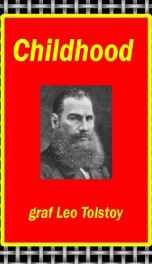
Childhood
Series:
Unknown
Year:
Unknown
Raiting:
1/5
This book was converted from its physical edition to the digital format by a community of volunteers. You may find it for free on the web. Purchase of the Kindle edition includes wireless delivery.
Show more
add to favoritesadd In favorites
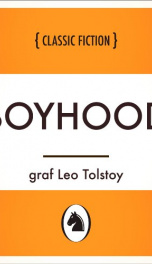
Boyhood
Series:
Unknown
Year:
Unknown
Raiting:
3/5
This book was converted from its physical edition to the digital format by a community of volunteers. You may find it for free on the web. Purchase of the Kindle edition includes wireless delivery.
Show more
add to favoritesadd In favorites
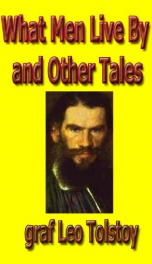
What Men Live By and Other Tales
Series:
Unknown
Year:
Unknown
Raiting:
2.5/5
Russian classic prose by Leo Tolstoy, a writer widely regarded as among the greatest of novelists, best known for his masterpieces “War and Peace” and “Anna Karenina”. At the heart of the story Tolstoy put a legend “Archangel”, heard from a narrator of folk tales. “What Men Live By” became the first short story appeared after a four-year interruption and evoked a great interest of critics. The book also includes the stories “Three questions”, “The Coffee House of Surat” and “How much land does a man need”.
Show more
add to favoritesadd In favorites
What readers are saying
What do you think? Write your own comment on this author!
write a commentif you like Tolstoy Leo graf try:
readers also enjoyed
What readers are saying
What do you think? Write your own comment on this author!
write a commentGenre
if you like Tolstoy Leo graf try:
readers also enjoyed
Do you want to exchange books? It’s EASY!
Get registered and find other users who want to give their favourite books to good hands!
